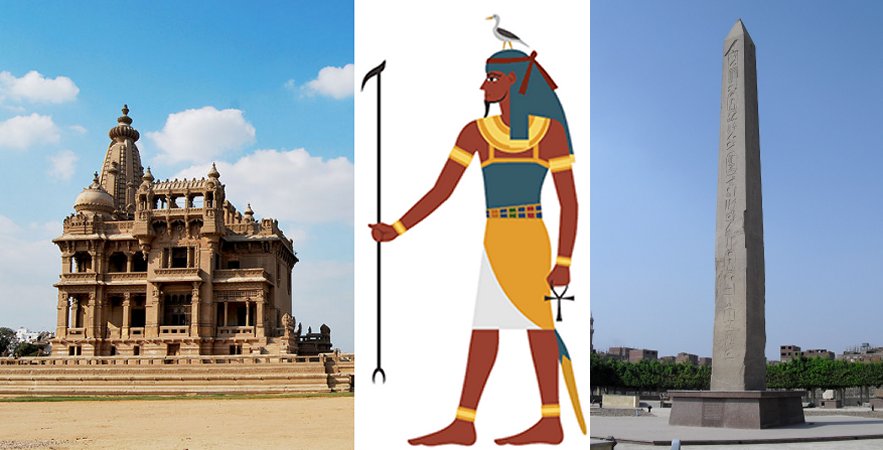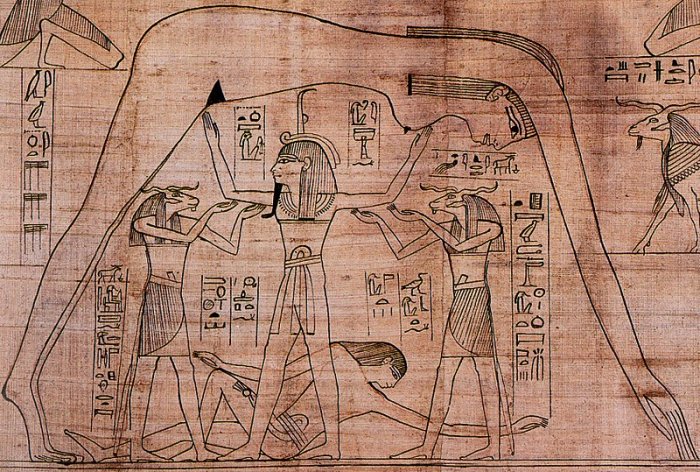Geb – Egyptian God Of Earth And Member Of The Ennead – His Laughter Created Earthquakes
Ellen Lloyd - AncientPages.com - Ancient Egyptians had many creation myths and they were different. Still, people of ancient Egypt believed in them all and there was no reason to say one specific myth was more authentic than another. Ancient Egyptians could explain a phenomenon in many different ways. Nevertheless, all these creation myths had one thing in common. They held that the world had arisen out of the lifeless waters of chaos, called Nun.
An Egyptian creation myth tells that Geb was a member of the Ennead, a group of nine gods worshipped at Heliopolis, of the oldest cities of ancient Egypt, occupied since the Predynastic Period. Heliopolis was home to the cult of the sun god Atum, who came to be identified with Ra and later with Horus.
Right: The reverse side of Baron Empain Palace (Qasr Al Baron), on Salah Salem, a main street in Heliopolis. Credit: Public Domain. Middle: God Geb. Credit: Public Domain Left: Obelisk of Sesostris I, 12th Dynasty, Middle Kingdom in Heliopolis. Credit: David Schmid, Wikipedia, CC BY-SA 3.0
Geb was the god of Earth and he was feared as the father of the snakes. It was said that his laughter created earthquakes. This should not be taken literally of course. It simply meant that he was so powerful that Earth trembled when his laughter was heard.
According to Egyptian mythology, Geb was the son of God Amun who emerged from Nun, the water of chaos in times before heaven and earth were separated.
Atum created the first gods known as Shu (air, emptiness) and Tefnut (moisture). Geb (earth) and Nut (sky) were their children.
Together, Shu, Tefnut, Geb, and Nut represent the elements (earth, water, air, sky), which created the world.
Geb and Nut were the parents of Osiris and Isis. Since Nut as a sky goddess is only visible daytime, it was believed she was separated from Geb so that God Shu could create cosmos.
Modern scholars have interpreted the separation between Geb and Nut in more romantic terms.
As Jonalyn Crisologo writes in the book Egyptian Mythology - Ancient Gods and Goddesses of the World, “similar to Atum, Ra sprung forth from Nun, the origin of all that ever was and is. Certain translations say Ra was Nut’s first mate. However, she fell in love with Geb and this was a problem.
See also:
Thoth: Ancient Egypt’s Most Mysterious, Highly Venerated God Of Knowledge And Writing
Immortal God Anubis: Lord Of The Sacred Land, Jackal God Of Mummification
When Ra discovered their affair, he separated the two. Geb wept in despair. His tears flowed into the world, creating the seas and oceans. Eventually, Nut gave birth to the five most prominent deities of Egypt, completing the Ennead: Osiris, Horus, Set, Isis, and Nephtys. “
God Geb had many symbols. One of them was the goose, which he sometimes wore on his head.
According to Pat Remler, author of the book Egyptian Mythology A-Z, Geb’s daughter Isis once held the obscure title “Egg of the Goose.” At other times Geb was portrayed as a man wearing the red crown of the Delta and reclining on one side or seated on a throne. One myth says that when Geb and his wife, Nut, became the parents of the sun, he was hailed as the “Father of the Gods.”
In a Coffin Texts spell Geb was described as father of the snake Nehebkau.
The Shabaka Stone, an ancient Egyptian religious text, which dates from the twenty-fifth dynasty of Egypt mentions God Geb. From this rectangular slab of black granite we learn that God Ptah and God Geb designated Set as the Lord of Upper Egypt, and Horus as Lord of Lower Egypt.
Detail from the Greenfield Papyrus (the Book of the Dead of Nesitanebtashru). It depicts the air god Shu, assisted by the ram-headed Heh deities, supporting the sky goddess Nut as the earth god Geb reclines beneath. Credit: Public Domain
Geb was a powerful and very important god, who was he was the of judge in the Contendings of Horus and Set.
This story is documented on the Chester Beatty Papyri and the events of the twentieth dynasty of ancient Egypt can be read on the first pages. The ancient text describes the battles between Horus and Seth to determine who will succeed Osiris as king.
God Geb gave his son Osiris to rule the Earth, but he was killed by his evil brother Set.
Horus sought revenge for the killing of his father and he murdered Set. Geb rewared Horus and gave him the Earth to rule. As Remler explains, it was from this myth that the titles of the pharaoh “Heir of Geb” originates.
Written by Ellen Lloyd – AncientPages.com
Copyright © AncientPages.com All rights reserved. This material may not be published, broadcast, rewritten or redistributed in whole or part without the express written permission of AncientPages.com
Expand for referencesMore From Ancient Pages
-
 Rock-Hewn Burial Shafts And 38 Symbolic Pots Discovered In Abusir Necropolis, Egypt
Archaeology | Feb 6, 2018
Rock-Hewn Burial Shafts And 38 Symbolic Pots Discovered In Abusir Necropolis, Egypt
Archaeology | Feb 6, 2018 -
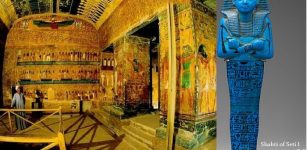 Ushabti: Servants Who Worked For Their Owners In Afterlife In Ancient Egyptian Beliefs
Ancient History Facts | Feb 12, 2020
Ushabti: Servants Who Worked For Their Owners In Afterlife In Ancient Egyptian Beliefs
Ancient History Facts | Feb 12, 2020 -
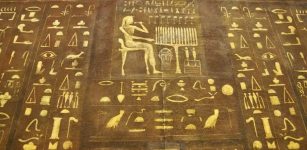 Decipher Hieroglyphs And Ancient Egyptian Images With Google’s AI Fabricius
Linguistic Discoveries | Jul 22, 2020
Decipher Hieroglyphs And Ancient Egyptian Images With Google’s AI Fabricius
Linguistic Discoveries | Jul 22, 2020 -
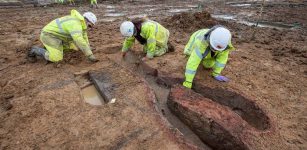 Discovered Roman Malting Oven Could Be Evidence Of 2,000-Year-Old Beer Production In The UK
Archaeology | Apr 4, 2022
Discovered Roman Malting Oven Could Be Evidence Of 2,000-Year-Old Beer Production In The UK
Archaeology | Apr 4, 2022 -
 Why Was Alexander A Great Military Genius?
Ancient History Facts | Oct 23, 2018
Why Was Alexander A Great Military Genius?
Ancient History Facts | Oct 23, 2018 -
 Matches Were Invented In Ancient China
Ancient History Facts | Mar 7, 2019
Matches Were Invented In Ancient China
Ancient History Facts | Mar 7, 2019 -
 Peculiar Neolithic Anomaly Investigated In Scotland
Featured Stories | Apr 27, 2024
Peculiar Neolithic Anomaly Investigated In Scotland
Featured Stories | Apr 27, 2024 -
 9,000-Year-Old Settlement Unearthed Near Jerusalem Sheds New Light On Stone Age Civilization
Archaeology | Jul 17, 2019
9,000-Year-Old Settlement Unearthed Near Jerusalem Sheds New Light On Stone Age Civilization
Archaeology | Jul 17, 2019 -
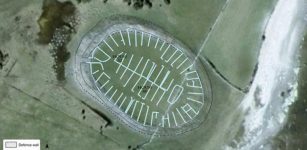 1500-Year-Old Mystery Of The Sandby Borg – Excavation Of Ringfort On Öland, Sweden
News | Jan 1, 2014
1500-Year-Old Mystery Of The Sandby Borg – Excavation Of Ringfort On Öland, Sweden
News | Jan 1, 2014 -
 Indigenous Village Estimated To Be 11,000 Years Old – Discovered Near Sturgeon Lake
Archaeology | Feb 10, 2025
Indigenous Village Estimated To Be 11,000 Years Old – Discovered Near Sturgeon Lake
Archaeology | Feb 10, 2025 -
 Sweden’s Blue Maiden ‘Blåkulla’ Island – Mythical Place With Dark Secrets Of Witches And Wizardry
Places | Sep 23, 2015
Sweden’s Blue Maiden ‘Blåkulla’ Island – Mythical Place With Dark Secrets Of Witches And Wizardry
Places | Sep 23, 2015 -
 DNA Confirms 2,000-Year-Old Sustainable Fishing Practices Of Tsleil-Waututh Nation
Archaeology | Nov 13, 2021
DNA Confirms 2,000-Year-Old Sustainable Fishing Practices Of Tsleil-Waututh Nation
Archaeology | Nov 13, 2021 -
 Ancient DNA Sheds Light On ‘Lost’ Indigenous People Of Uruguay And Reveals A Surprising Connection
Archaeology | May 11, 2022
Ancient DNA Sheds Light On ‘Lost’ Indigenous People Of Uruguay And Reveals A Surprising Connection
Archaeology | May 11, 2022 -
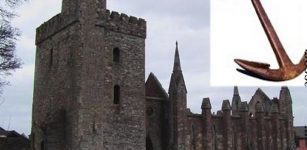 Medieval Celtic Mystery Written In Konungs Skuggsja – The King’s Mirror
Featured Stories | Sep 13, 2018
Medieval Celtic Mystery Written In Konungs Skuggsja – The King’s Mirror
Featured Stories | Sep 13, 2018 -
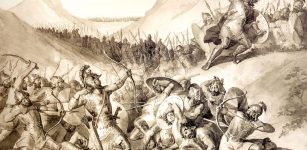 Armenia: Old Land Where Myths, Legends And Long History Meet
Civilizations | Apr 20, 2016
Armenia: Old Land Where Myths, Legends And Long History Meet
Civilizations | Apr 20, 2016 -
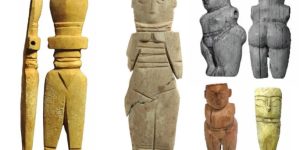 Ancient Wooden ‘Coptic Dolls’ May Have Been The Ancestors Of Today’s Barbie Dolls
Archaeology | Sep 23, 2023
Ancient Wooden ‘Coptic Dolls’ May Have Been The Ancestors Of Today’s Barbie Dolls
Archaeology | Sep 23, 2023 -
 Ancient Suda: Massive Anonymous Byzantine-Greek Lexicon Dated To 10th Century
Featured Stories | Nov 6, 2018
Ancient Suda: Massive Anonymous Byzantine-Greek Lexicon Dated To 10th Century
Featured Stories | Nov 6, 2018 -
 Mysterious Camerano Underground City – Secret Meeting Place For Knights Templar?
Featured Stories | Dec 13, 2017
Mysterious Camerano Underground City – Secret Meeting Place For Knights Templar?
Featured Stories | Dec 13, 2017 -
 Rare Bulla (Seal) And 2,600-Year-Old Stamp With Biblical Name Unearthed In City Of David
Archaeology | Apr 3, 2019
Rare Bulla (Seal) And 2,600-Year-Old Stamp With Biblical Name Unearthed In City Of David
Archaeology | Apr 3, 2019 -
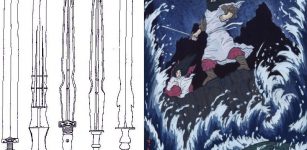 Sacred Regalia Of Japanese Emperor: Sword, Mirror And Jewel In Ancient Japanese Tradition
Artifacts | Sep 2, 2017
Sacred Regalia Of Japanese Emperor: Sword, Mirror And Jewel In Ancient Japanese Tradition
Artifacts | Sep 2, 2017

